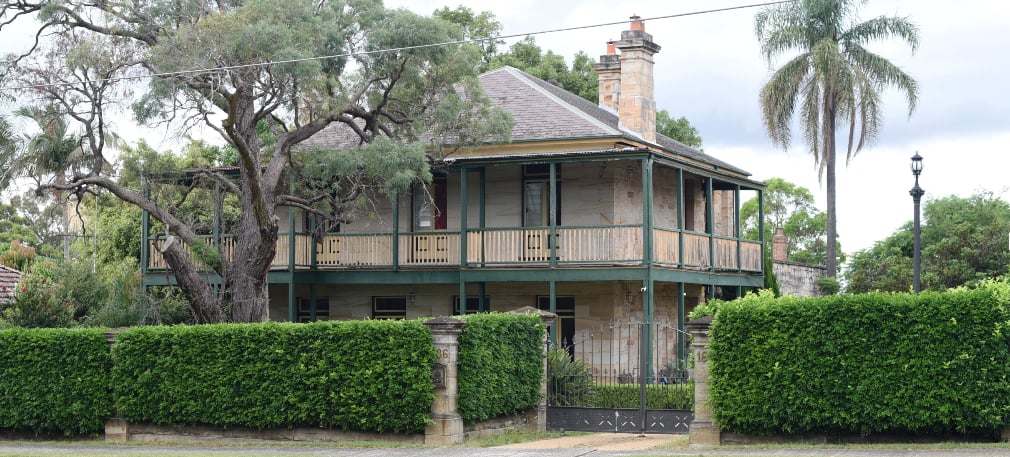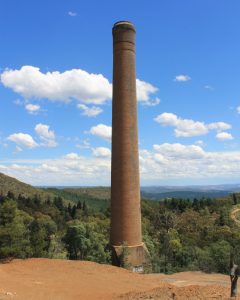A historic copper mine and a magnificent 19th century Victorian home are the latest places to join the National Trust (NSW) register, reflecting the interesting range of heritage sites across New South Wales.
Since 1946 the National Trust has prepared close to 12,000 heritage listings, and every year this list grows as new places are added to our register. The aim is to protect special historic places from a range of threats, such as demolition, neglect, and overdevelopment.
The two latest places to join the register reflect the enormous breadth of what constitutes a heritage site; one representing the life and times of a substantial residence in Sydney, and the other displaying the historic mining escapades of a regional village in the Central West. While worlds apart in both location and character, both reveal the pattern of New South Wales’ development throughout the 19th and 20th centuries.
Sunnyside, Beverly Park
‘Sunnyside’ is a substantial Victorian two-storey residence that was built in the 1860s. Constructed of a sandstone façade and rubble stone to the rear, the house features a wrap-around verandah with French doors opening onto both levels. Its style is representative of the establishments which developed along the main transport routes throughout the mid-19th century, and it remains one of the oldest homes in the district.
The significance of ‘Sunnyside’ is largely imbued in its historical associations with prominent families and a range of occupations having inhabited the property over its lifetime.

The site was first purchased by Matthew Carrol circa 1848, who would later go on to build ‘Sunnyside’ house. The Carroll family were recognised district pioneers, having been some of the first settlers in the Kogarah district who helped develop the southern region of early Sydney. Matthew’s son, J.B. Carroll, was the Mayor of Kogarah during the late 1880s. He was involved in the development of the Princes Highway, the Georges River crossing punt at Tom Ugly’s Point, a number of landmark buildings, re-routing of the railway, and incorporation and early development of Kogarah Municipality. In 1884, ‘Sunnyside’ was sold to Patrick Joseph Lacey, who was also several times the Mayor of Kogarah.
Throughout the 20th century, the property was let for a variety of purposes, including as a Church of England rectory, a private school, a men’s rooming house, and a print broker’s office. In 1993, a development application was lodged to turn ‘Sunnyside’ into a McDonald’s outlet, but was thankfully rejected by Kogarah Council. Since its many ventures of varied tenancy throughout the 1900s, the property was restored in 2014 as an individual and stately home.
Burraga Village and Copper Mine

Copper was first discovered by a shepherd on ‘Back Burraga’ run in the Abercrombie Mountains, located between the south-east of Oberon and south-west of Blayney in the Central West of NSW. In 1877, a substantial mine and private mining town had been established by Messrs Russell and Clarke on the sloping hills of the region, originally titled Thompsons Creek, later Burraga Village for its farming namesake.
The mine ran until 1918, and during its peak was the second largest copper supplier in the Central West. Its initial success led to a quick purchase by a Mr Lewis Lloyd circa 1879, later known as the “Copper King’. Annual Reports of the Mines Department described this purchase of the mine as being: “passed into the hands of capitalists for £5000”. By 1900, the mine had produced over £1,000,000 worth of copper.
Lloyd was a Welsh born smelter, who built up a portfolio of mines and smelters throughout the Central West of NSW, and used the technology and smelting expertise from his homeland to successfully mine, smelt and sell copper. It was under Lloyd’s ownership that Burraga reached its full potential in mining; in 1883 there were 200 men employed, and the population of the village swelled to 500 persons, leading to the need for a secondary public town, including school and post office.
Lloyd sold the mine in 1899, which inevitably led to its eventual downfall and closure. Various attempts were made to revitalise the site by its new owners, including renaming it “Lloyd’s Copper Mine” based on his historic reputation, as well as the use of water jacket furnace technology, however the mine was closed in 1918. Very few of the people remained in the village, and by 1924, the population was recorded as 124 residents. The village still has a small population, and retains a public school, post office and community hall.
The Village of Burraga and the Lloyd’s Copper Mine indicate the history of copper mining technology and development of regional towns in New South Wales throughout the late 19th and early 20th centuries. Much of the remnant mining and smelting infrastructure remains intact, as does the surrounding township, displaying a glimpse into the past of this once thriving western town.
What is the National Trust Register?
The National Trust maintains a register of landscapes, townscapes, buildings, industrial sites, cemeteries and other items or places which we determine to have cultural significance and are worthy of conservation.
While the National Trust Register has no legal force, it is regarded as an authoritative statement on the heritage significance of a place, and serves as an early, non-statutory warning that it should be conserved. Often a listing can lead to legislated heritage protection by gathering important evidence for the historical record, which is ready to hand when challenges arise. Find out more about the National Trust Register.
Is your property eligible for listing?
If you would like to research a listed property, help update the information for your property, or suggest a property for future listing, contact the National Trust’s advocacy team at advocacy@nationaltrust.com.au
If you’d like to stay up-to-date on the latest National Trust (NSW) news, events and special offers, subscribe to our free monthly newsletter.

 Twitter
Twitter Facebook
Facebook Linkedin
Linkedin Email
Email